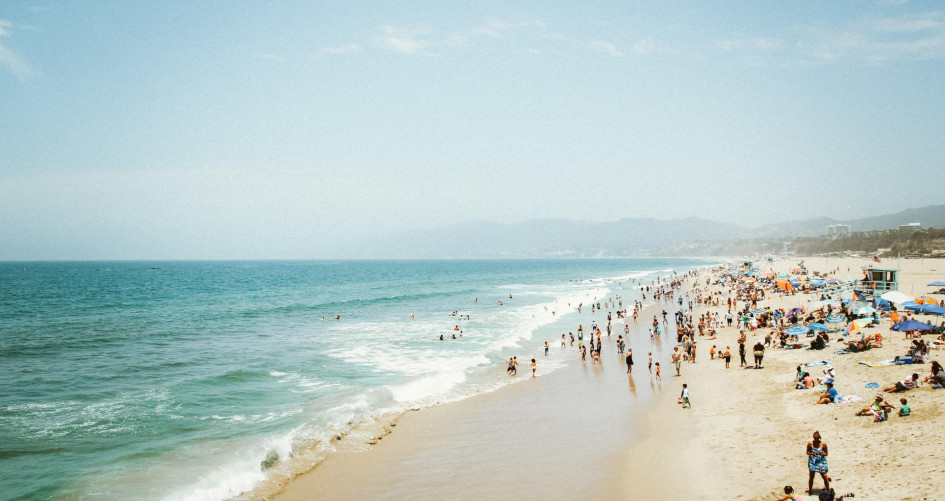June was, it is fair to say, a bad month for the fight against climate change. In Portland the city’s streetcar power cables melted while in New York, residents were told not to use appliances such as washing machines or air conditioners in order to protect the power grid. In Canada, British Columbia’s Chief Coroner said her office received reports of at least 486 “sudden and unexpected deaths” in one five-day period in June, compared to the usual five-day death rate of 165. A village called Lytton in British Columbia recorded Canada’s hottest ever day, with a temperature of 49.6C, a huge jump over the previous record of 45C. Lytton was almost totally destroyed by a wildfire the same week that temperature was recorded. In Verkhoyansk, in Siberia, a weather station recorded a 38-degree day, the highest ever Arctic temperature since records began. Temperatures in Baghdad reached 50 degrees, which led to a public holiday, as it was too hot to work after the electricity system collapsed.
There were multiple heat waves across the globe last month, and some of them, like the ones seen in Canada and the United States’ Pacific Northwest, were unlike any ever seen before. Unfortunately, it is not the first summer we have seen extreme weather such as this: in 2019 a heatwave was blamed for 2,500 deaths in Western Europe, alone.
So, are these weather events connected to climate change? Absolutely, says a group of scientists who wrote a report on the recent heatwaves for World Weather Attribution. They used 21 different climate models to estimate how much climate change influenced the extreme heat experienced in Seattle, Portland and Vancouver last month. According to one of the report’s co-authors, Sjouke Philip, from the Royal Netherlands Meteorological Institute, “we conclude that a one-in-a-1000-year event [like the Pacific Northwest heatwave] would have been at least 150 times rarer in the past.” Even more sobering, the report’s authors estimate that heatwaves such as this one will be a once per decade event by 2040.
Co-author, Dr Friederike Otto, from the University of Oxford, added: “Without the additional greenhouse gases in the atmosphere – in the statistics we have available with our models and in our observations – such an event just does not occur. Or if it does occur, it occurs once in a million times, which is the statistical equivalent of never,” she told a news briefing at the report’s launch, earlier this month.
The study is not peer-reviewed, but uses techniques that have been peer-reviewed, and uses computer simulations to compare what happens in the real world to a hypothetical world in which there are no carbon emissions.
The bad news? If the world warms another 1.5 degrees, events like we experienced in the past month will not be so rare, with the researchers estimating the changes of such a severe heatwave occurring will increase by as much as 20 per cent in a given year. “For heat waves, climate change is an absolute game changer,” Dr Otto said.
The reality of this is stark. Heatwaves not only have huge impacts on human health, they exacerbate droughts, increase ozone levels and require greater use of electricity (which can sometimes overwhelm the grid), and course lead to greater carbon emissions. Indeed, increasing temperatures could see parts of the world rendered uninhabitable for humans during the hottest parts of the year.
What all of this illustrates is the urgent need for us to reduce our emissions as soon as possible. If we don’t, then the recent heat waves we have seen across the world are only going to get more frequent and more severe.
So, what can we do about increased heat waves? Well, aside from taking climate action in order to reduce emissions and mitigate the heatwaves, a number of measures can be taken to adapt to them too, both at the community level, and at home:
You can ask your local government to:
- Open/make provisions for cooling centres, if there aren’t any;
- Increase the surface of green spaces and parks to cope better with the heat;
- Make use of water in urban planning to absorb the heat (fountains, artificial lakes, canals, ponds, water spraying, road sprinkling, irrigation canals, etc.);
- Support ecosystem restoration and protection projects in order to adapt to the changing climate. For an example of such projects in the Blue Economy, see here.
- Encourage green roofs or support the painting of roofs in white;
- Allow for businesses and shops opening hours to differ during heat waves (for example, in some southern countries, they close from 12.00 to 18.00 and then reopen until 22.00 – if the current legal rules do not already allow for it) – so people can avoid going out during the hottest hours;
- Extend the opening hours of public swimming pools;
- Make public transport cheaper or even free during heatwaves to restrict the use of cars.
You can also:
- Take cold baths/showers;
- Avoid switching on electronic appliances or lights unless needed;
- Make use of curtains and shutters to keep in the shade and keep the sun and heat away;
- Avoid going out during the hottest parts of the day;
- Avoid physical activity outdoors;
- Drink lots of water;
- Wear loose clothing.
